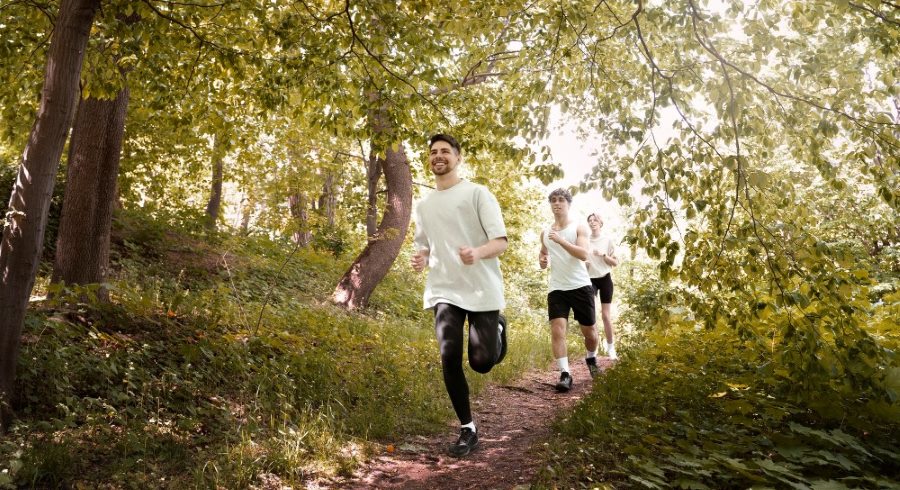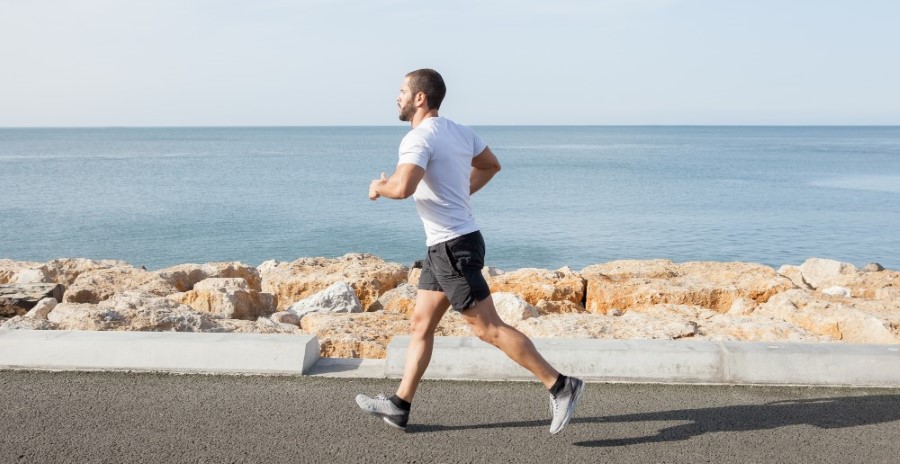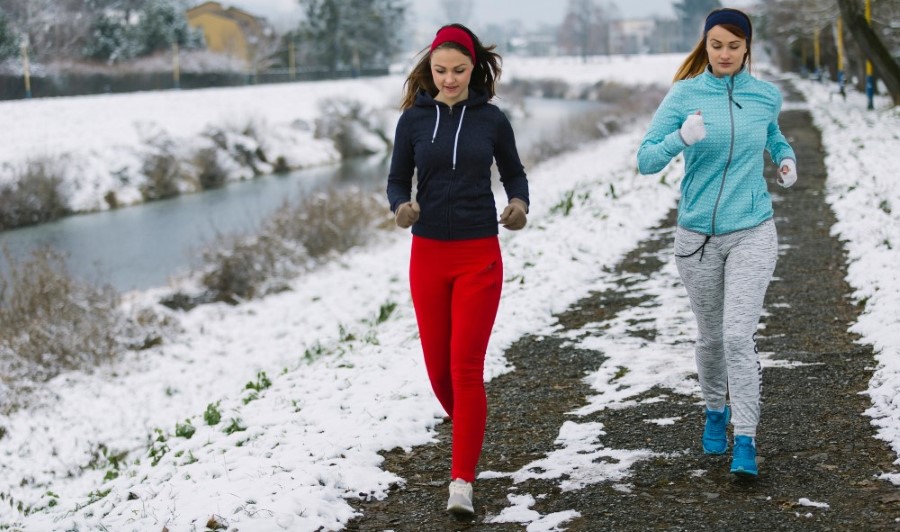Dress for Success: Your Ultimate Guide to Running Attire in Every Season and Condition
How to Dress Running Attire: A Guide for All Seasons and Conditions
Why do you need running attire? Running is a great way to stay fit, healthy, and happy. But to get the most out of your runs, you need to dress appropriately for the weather, the terrain, and the time of day. In this blog post, we will share some tips and advice on how to dress for running in different seasons and conditions, based on our experience and collaboration with some of the world’s best endurance athletes.
Table of Contents
ToggleWhy Does It Matter What You Wear for Running?
You might think that running is a simple sport that doesn’t require much equipment or planning. Just put on some clothes, shoes, and head out the door, right? Well, not quite. What you wear for running can have a significant impact on your comfort, performance, and safety. Here are some reasons why:
Your body temperature changes during running. When you start running, your body generates heat and sweat to cool you down. As you run, you lose heat through evaporation, convection, and radiation. Depending on the weather, you might feel too hot, too cold, or just right. If you dress too warmly, you might overheat, dehydrate, and slow down.
If you dress too cold, you might shiver, lose energy, and risk hypothermia. If you dress just right, you can maintain a comfortable and optimal body temperature throughout your run.
Your skin needs protection from the elements. Running exposes your skin to various environmental factors, such as sun, wind, rain, snow, dust, and pollution. These can cause irritation, inflammation, sunburn, chafing, blisters, and infections.
To prevent these problems, you need to wear clothes that protect your skin from harmful UV rays, moisture, friction, and dirt. You also need to apply sunscreen, lip balm, and moisturizer as needed.
Your visibility affects your safety. Running on roads and in low-light conditions can be dangerous if you are not visible to other road users, such as drivers, cyclists, and pedestrians. To avoid accidents and injuries, you need to wear clothes that make you stand out and reflect light. You also need to use lights, such as headlamps, flashlights, or LED armbands, to illuminate your path and signal your presence.
What to Wear for Running in Different Seasons and Conditions
Now that you know why it matters what you wear for running, let’s look at some examples of what to wear for running in different seasons and conditions. Of course, these are general guidelines and you should always adjust your outfit according to your personal preferences, comfort level, and local climate.
Spring

Spring is a season of transition, where the weather can be unpredictable and vary from day to day. You might encounter warm, sunny days, cold, rainy days, or anything in between. To prepare for spring running, you need to have a versatile wardrobe that allows you to layer up or down depending on the temperature and precipitation. Here are some suggestions for spring running outfits:
Warm conditions: For running in warm conditions, you want to wear light, breathable, and moisture-wicking clothes that keep you cool and dry. A tank top or tee with a full mesh back, such as the Focus Mesh Tee, is a great choice for running in warm conditions. Pair it with shorts or short tights that offer freedom of movement and ventilation. Don’t forget to wear a hat, sunglasses, and sunscreen to protect yourself from the sun.
Cool conditions: For running in cool conditions, you want to wear clothes that provide some insulation and wind resistance, but still allow moisture to escape. A long-sleeve running jersey and tights are a good option for running in cool conditions.
You can also wear a short- or long-sleeved base layer top underneath for extra warmth. If it’s windy, you can add a vest or a thin and wind-resistant running jacket over your jersey. For your lower body, you can choose shorts and boxers with extra-long legs for extra warmth around the thighs.
Rainy conditions: For running in rainy conditions, you want to wear clothes that repel water and dry quickly, but still breathe well. You don’t want to wear clothes that are too waterproof, as they will trap sweat and make you wet and cold from the inside.
A water-repellent running jacket, such as the Nano Weight Running Jacket, is a good option for running in rainy conditions. It has a DWR (durable water repellent) coating that sheds light rain and a mesh back that enhances ventilation. Pair it with synthetic tee and tights that won’t absorb water and weigh you down.
Summer

Summer is a season of heat, humidity, and sunshine. Running in summer can be challenging and enjoyable, depending on how you cope with the high temperatures and sweat. To run comfortably and safely in summer, you need to wear clothes that are light, airy, and sun-protective. Here are some suggestions for summer running outfits:
Hot and humid conditions: For running in hot and humid conditions, you want to wear clothes that are thin, loose, and have large mesh panels that allow air to circulate and sweat to evaporate. A tank top or tee with a full mesh back, such as the Focus Mesh Tee, is a great choice for running in hot and humid conditions. Pair it with shorts or short tights that offer freedom of movement and ventilation.
Don’t forget to wear a hat, sunglasses, and sunscreen to protect yourself from the sun. You also need to drink plenty of water and electrolytes to stay hydrated and prevent heat exhaustion or heat stroke.
Dry and sunny conditions: For running in dry and sunny conditions, you want to wear clothes that are light, breathable, and have a high UPF (ultraviolet protection factor) rating that blocks harmful UV rays.
A long-sleeve running jersey with a high UPF rating, such as Nano Weight Running Jersey, is a good option for running in dry and sunny conditions. It has a soft and smooth fabric that feels cool and comfortable on the skin. Pair it with shorts or short tights that offer freedom of movement and ventilation. Don’t forget to wear a hat, sunglasses, and sunscreen to protect yourself from the sun.
Fall

Fall is a season of change, where the weather can be mild, crisp, or cold. Running in fall can be pleasant and scenic, as you enjoy the colorful foliage and fresh air. To run comfortably and efficiently in fall, you need to wear clothes that adapt to the changing temperatures and conditions. Here are some suggestions for fall running outfits:
Mild conditions: For running in mild conditions, you want to wear clothes that are light, breathable, and moisture-wicking, but still provide some warmth and coverage. A short-sleeve running jersey and tights are a good option for running in mild conditions. You can also wear a thin and wind-resistant running jacket or vest over your jersey if it’s breezy.
For your lower body, you can choose shorts or short tights if you prefer more ventilation, or long tights if you prefer more warmth.
Crisp conditions: For running in crisp conditions, you want to wear clothes that are warm, cozy, and soft, but still allow moisture to escape. A long-sleeve running jersey and tights are a good option for running in crisp conditions. You can also wear a fleece or wool base layer top underneath for extra warmth and comfort. If it’s windy, you can add a vest or a thin and wind-resistant running jacket over your jersey.
For your lower body, you can choose long tights that offer insulation and protection.
Cold conditions: For running in cold conditions, you want to wear clothes that are warm, snug, and windproof, but still breathe well. A long-sleeve running jersey and tights are a good option for running in cold conditions. You can also wear a thermal base layer top and bottom underneath for extra warmth and insulation.
If it’s windy, you can add a thick and windproof running jacket or coat over your jersey. For your lower body, you can choose thermal tights that offer warmth and wind resistance.
Winter

Winter is a season of cold, snow, and ice. Running in winter can be challenging and rewarding, depending on how you prepare and dress for the harsh conditions. To run comfortably and safely in winter, you need to wear clothes that are warm, waterproof, and grippy. Here are some suggestions for winter running outfits:
Snowy conditions: For running in snowy conditions, you want to wear clothes that are warm, waterproof, and have reflective details for visibility. A thick and waterproof running jacket or coat, such as the Storm Thermal Jacket, is a good option for running in snowy conditions. It has a waterproof and breathable fabric that keeps you dry and warm, and a hood and high collar that protect your head and neck.
Pair it with a thermal base layer top and bottom that offers warmth and insulation.
For your lower body, you can choose thermal tights that offer warmth and protection. Don’t forget to wear a hat, gloves, and socks that are warm and waterproof. You also need to wear shoes that have good traction and grip on snow and ice.
Icy conditions: For running in icy conditions, you want to wear clothes that are warm, windproof, and have reflective details for visibility. A thick and windproof running jacket or coat, such as the Storm Thermal Jacket, is a good option for running in icy conditions. It has windproof and breathable fabric that keeps you warm and comfortable, and a hood and high collar that protect your head and neck.
Pair it with a thermal base layer top and bottom that offers warmth and insulation. For your lower body, you can choose thermal tights that offer warmth and wind resistance.
Don’t forget to wear a hat, gloves, and socks that are warm and windproof. You also need to ensure your footwear provides a good grip on slippery surfaces. opt for shoes with aggressive treads or add traction devices like ice spikes or grippers to your running shoes. This extra traction reduces the risk of slipping and helps maintain stability while navigating icy terrain.
Additionally, consider using a headlamp or wearable LED lights to enhance visibility in low-light icy conditions, ensuring safety while running.
Final Thoughts
Ultimately, the right running attire supports your body’s needs, enabling you to perform at your best while staying comfortable and safe. Experiment with different combinations based on weather conditions and personal comfort preferences to find what works best for you.
Remember, finding the ideal running attire isn’t just about following trends—it’s about optimizing your running experience for better performance and enjoyment. So, lace up, dress right, and hit the road with confidence!
- Facebook
- Twitter
- Linkedin
- Whatsapp






